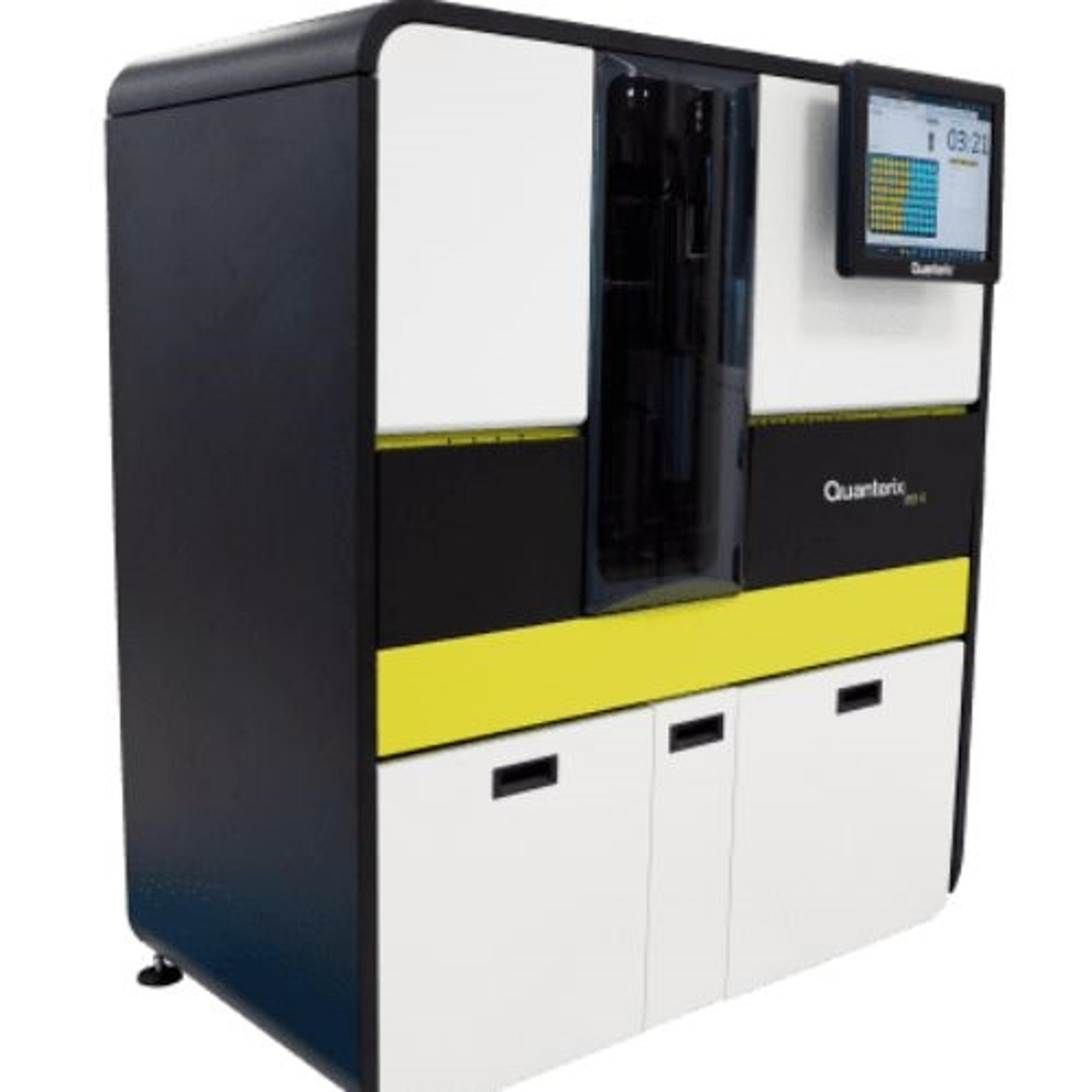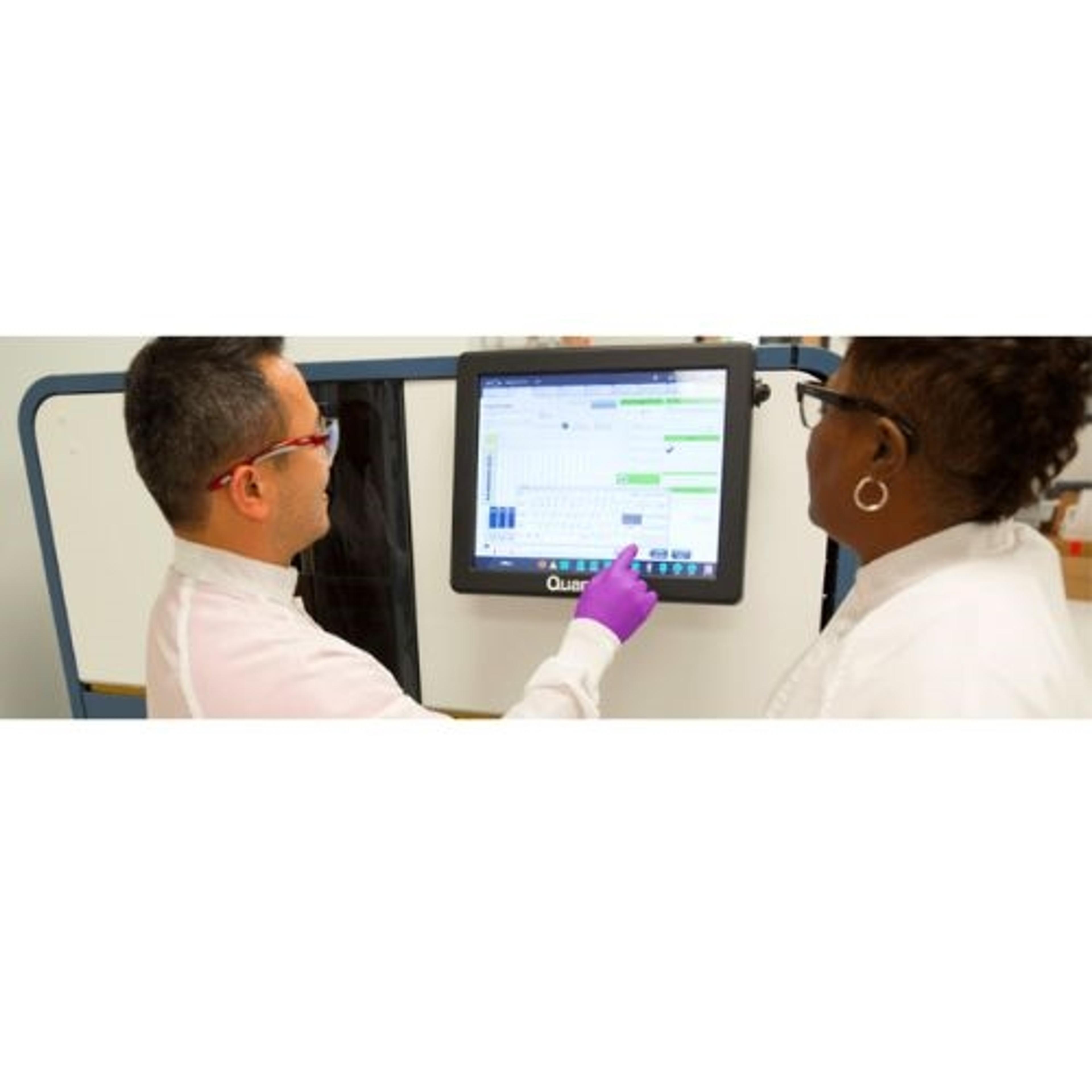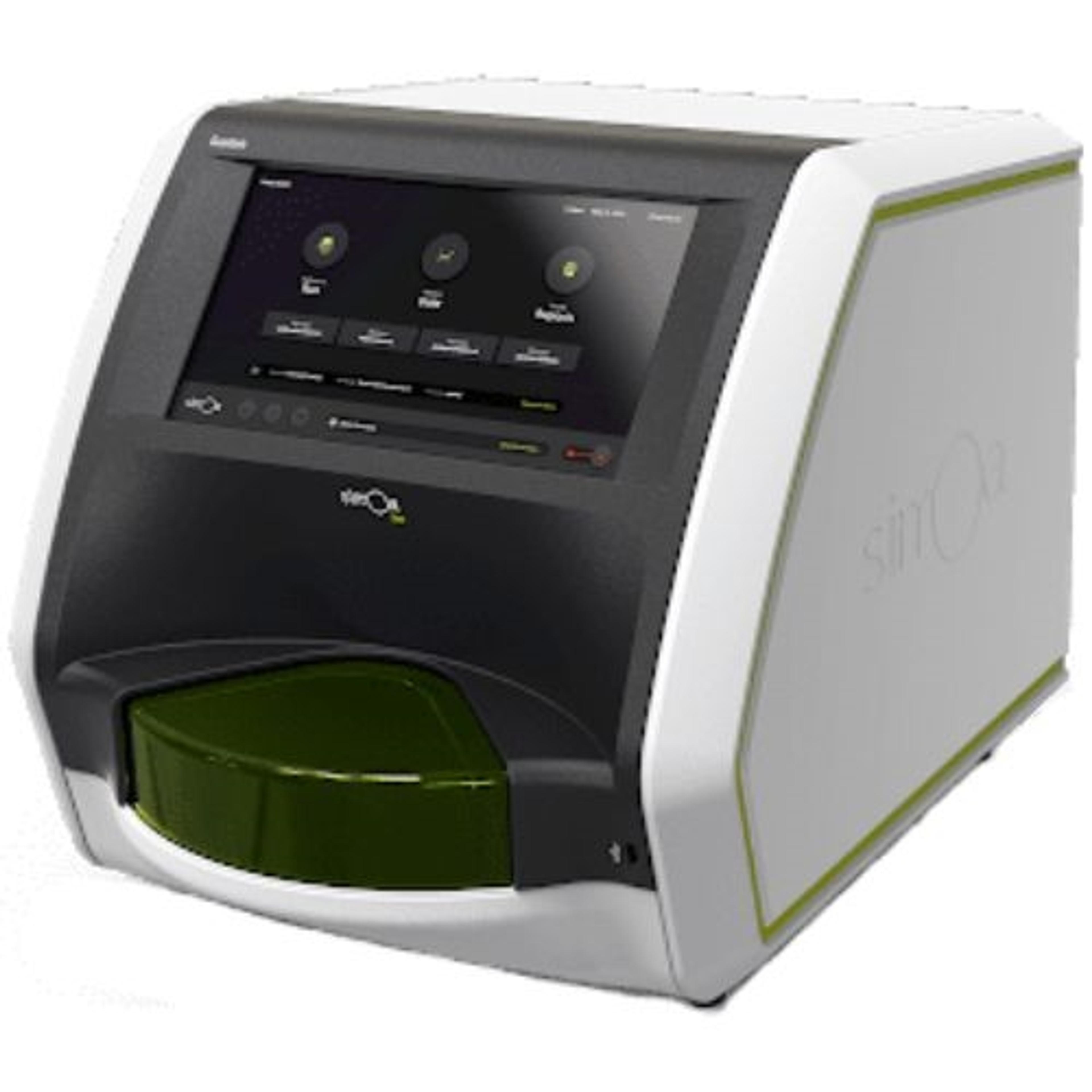Ultrasensitive immunoassay technology drives blood-based biomarkers for Alzheimer's disease
Leveraging Quanterix’s Simoa platform, researchers lay the groundwork for pre-symptomatic Alzheimers diagnosis, guided treatment, and accelerated clinical drug trials
8 Feb 2024
Quanterix’s ultrasensitive digital immunoassay technology, Single molecule array (Simoa®), is helping researchers uncover novel blood-based biomarkers for Alzheimer’s disease (AD) and explore their value in clinical trials, drug development, and patient care.
We spoke with Dr. Nicholas Ashton, Associate Professor of Neurochemistry at the University of Gothenburg, and Dr. Milena Milutinovic, Senior Manager of Field Applications at Quanterix, to learn more about the evolving landscape of AD diagnosis and treatment, the capabilities of the Simoa® platform, and the impact blood-based biomarkers could have on the early detection and management of AD and other neurological disorders.
Detecting Alzheimer’s disease pathology in the blood
Alzheimer’s disease is a complex and progressive neurodegenerative disorder that affects millions of individuals and is the leading cause of dementia worldwide. It is characterized by the accumulation of amyloid-β (Aβ) plaques and neurofibrillary tangles composed of phosphorylated tau (p-tau) in the brain. While these pathological changes are known to begin decades before the onset of cognitive symptoms, the clinical diagnosis of AD dementia predominantly relies on symptomatic assessment, and a definite diagnosis can only be confirmed through post-mortem examination.
Advances in cerebrospinal fluid (CSF) biomarker measurements and neuroimaging techniques such as positron emission tomography (PET) have enabled the in vivo identification of AD pathology. However, the wide adoption of these methods has been hindered by their high cost, invasiveness, and inaccessibility. In contrast, blood-based biomarkers represent a simpler, cost-effective, and less invasive means to detect AD pathology, but such markers are often present in very low abundance in the blood, making their quantification challenging.
This is where Quanterix’sSimoa® technology has been and continues to be a game-changer. “Simoa®, thanks to its ultrasensitivity, is among the first technologies to allow researchers to measure the same biomarkers that are present in CSF in the blood as well,” shares Dr. Milutinovic. “Simoa® bead-based immunoassays are around 1,000 times more sensitive than conventional ELISA and enable single-molecule counting – hence its name, which comes from single molecule array.”
“In recent years, using ultrasensitive immunoassays such asSimoa®, we’ve been able to detect very low levels of proteins of interest that are coming from the brain into the bloodstream, including phosphorylated tau and neurofilament light (NfL),” explains Dr. Ashton. “These assays are being used more routinely in research and are now being implemented into clinical drug trials as well as clinical routine to help diagnose dementia quicker and easier.”

The value of blood biomarkers for Alzheimer's disease
Blood-based biomarkers not only offer the potential to improve the diagnosis of AD but may also act as valuable tools for selecting patients for inclusion in clinical trials. “Most drugs targeting AD are focusing on clearing amyloid pathology from the brain, so in order for these drugs to be successful, you only want to have individuals included in your trial that have amyloid pathology,” explains Dr. Ashton. “We’re currently using PET imaging and spinal fluid tests for trial recruitment, but a blood biomarker would make this much more accessible for patients across all communities and not just those that have access to high-quality hospital care.”
According to Dr. Ashton, interest in blood biomarkers for AD has also been spurred by the emergence of anti-amyloid therapies that may be most effective when provided early in the disease progression. “Several drugs have been approved in the last few years that have been shown to completely remove amyloid from the brain. The sticking point is that the benefit to patients have been minimal, but this is beginning to get better and better,” he says.
“As researchers, we are aware that amyloid accumulates in the brain decades before symptoms. If we have methods that can completely clear amyloid, then potentially the optimal time for greatest benefit is treat people in this ‘preclinical’ phase,” he continues. “So, some major trials are now investigating removing amyloid in individuals that have no symptomatic signs; they have developing pathology in the brain but are cognitively normal. We will know the results of those in around three or four years, and we could get to the point where we start treating people without symptoms.”
In addition to identifying patients with AD pathology for clinical trials, researchers are also exploring the use of blood-based biomarkers to assess the efficacy of novel treatments. “Blood testing, being more amenable to serial measurements than CSF or imaging, could help us monitor if someone is responding to a drug or not and even help determine the drug dose or frequency of administration,” says Dr. Ashton. “We’re now using blood biomarkers as an outcome measure, even if the clinical signs of the patient aren't showing the same thing, to see how effective a drug is.”
“For example, as of today, there are more than 100 drug clinical trials that use NfL as a primary or secondary endpoint biomarker in clinical trials,” adds Dr. Milutinovic. “Seven or eight years ago, no one even considered doing any kind of blood-based testing for these kinds of biomarkers, but now, thanks to increases in sensitivity, there’s a huge emphasis on liquid biomarkers in the neurology space.”
Ultrasensitive biomarker detection on an open platform
Dr. Ashton explains that Quanterix’sSimoa® technology has been pivotal to this shift. “Simoa® has been instrumental in making neurofilament light accessible to any lab in the world, and we're going a similar way with phosphorylated tau,” he says. “Using less sensitive technologies, we were only able to detect individuals that had severe disease, but withSimoa® we’re able to detect these proteins at femtomolar-level concentrations in all individuals. This is very important for studying individuals in the very early phases of a disease and longitudinal change.”
Beyond the platform’s ultrasensitivity, another key benefit of Simoa® is its open architecture, which allows researchers to create their own 'homebrew' assays. “It’s a completely open platform, so you don't have to rely on a company to dictate which proteins you look at,” says Dr. Ashton. “That’s a major advantage, as you can create and test your own hypotheses, and hopefully develop an assay from basic research right up to clinical utility – this is what we have done with phosphorylated tau.”
“There are several options for users looking to develop custom assays,” adds Dr. Milutinovic. “We can develop these for customers from our own service laboratory or we can train users how to prepare their own capture and detection reagents on Simoa® beads or planar array, and even do a few runs with them to help optimize detection. All this training works toward the goal of making sure they themselves can develop in-house ultra-sensitive immunoassays onSimoa®.”
Simoa technology: Bead-based versus planar arrays
Simoa® works in a similar principle to a classical sandwich ELISA and is available both in a bead-based format and as a planar array. In bead-based Simoa®, capture antibodies are immobilized on paramagnetic beads and are mixed with the sample, detection antibodies, and an enzyme with washing steps included after every incubation. The beads are then resuspended in a substrate and together loaded into the microarray containing over 200,000 wells, which forms a fluorescent product in the presence of the enzyme. Each well can hold only one bead. As wells are then sealed, this setup defeats diffusion, and concentrates fluorescent signal, which when imaged, enables detection of single molecule. Conversely, in Simoa® planar arrays, capture antibodies are spotted on the bottom of a plate in a circular pattern, with each spot corresponding to a different target analyte. These arrays can achieve up to ten-plex measurements simultaneously without compromising on sensitivity.
Future outlooks
Both Dr. Ashton and Dr. Milutinovic believe the impact of blood-based biomarkers on Alzheimer’s diagnosis and treatment is imminent. Where Dr. Ashton sees their greatest utility is for pre-screening in primary care settings, where they could help to streamline patient stratification and enable earlier clinical intervention.
“Researchers are now evaluating the use of blood-based biomarkers by identifying patients between three groups, based on two cutoffs so that we can confirm the presence of AD, completely rule-out AD, or identify those patients who would need further investigation by PETs scans or CSF analysis1,” adds Dr. Milutinovic. “This will allow many patients to be addressed in one way or another and would minimize the necessary number of expensive PET scans and invasive CSF tests.”
The use of blood-based biomarkers also opens doors to population-wide screening and health monitoring in individuals over time. “Following this year’s AAIC conference in Amsterdam, I think it's very plausible that we'll soon be able to diagnose Alzheimer's disease using a simpler method, e.g., blood collection from the finger,” says Dr. Ashton. “This could be an extremely useful tool for individuals to provide blood samples from home or a primary care center and have regular checkups if they are undergoing treatment.”
Dr. Ashton also stresses the importance of not overlooking patients who test negative for Alzheimer's pathology but still exhibit cognitive symptoms. “There are different types of proteins that develop in the brain that cause different dementias, such as alpha-synuclein for Lewy Body dementia or other types of tau pathology for frontal temporal dementia,” he says. “At the moment, we don't have any good tests for these disorders. This is going to be an area of future research usingSimoa® technology, where we’ll start this process again of finding candidates and developing ultrasensitive tests for different neurogenerative disorders.”
How to leverageSimoaFor both the bead-based and planar array formats, Quanterix offers a variety of dedicated instruments that cater to varying throughput needs. For bead-based assays, its HD-X instrument offers a fully automated solution capable of performing up to 288 measurements in a single run. Alternatively, the SR-X offers a compact and semi-automated solution suitable for labs with lower-throughput needs. Here, users generate immunocomplexes using specialized washers and shakers before transferring these to the benchtop SR-X reader. Each run accommodates up to 96 measurements, and labs can accomplish two to three runs per day. For planar array assays, the workflow closely mirrors that of the SR-X, with immunocomplexes being created on the bench using a partially automated workflow. Once formed, immunocomplexes are transferred to the SP-X reader, which can complete up to a 10-plex run in less than 10 minutes.The Accelerator LabFor those who may not have direct access to Simoa® technology, Quanterix’s Accelerator Lab, situated in Billerica, Massachusetts, enables customers to leverage Simoa's capabilities for sample testing or custom assay development, even without owning the instrumentation themselves. Users can choose between commercially available reagents, custom kits, or specific components built with their own proprietary antibodies.
References
1. Brum W.S., Cullen N.C., Janelidze S., et al. A two-step workflow based on plasma p-tau217 to screen for amyloid β positivity with further confirmatory testing only in uncertain cases [published online ahead of print, 2023 Aug 31]. Nat Aging. 2023;10.1038/s43587-023-00471-5. doi:10.1038/s43587-023-00471-5




